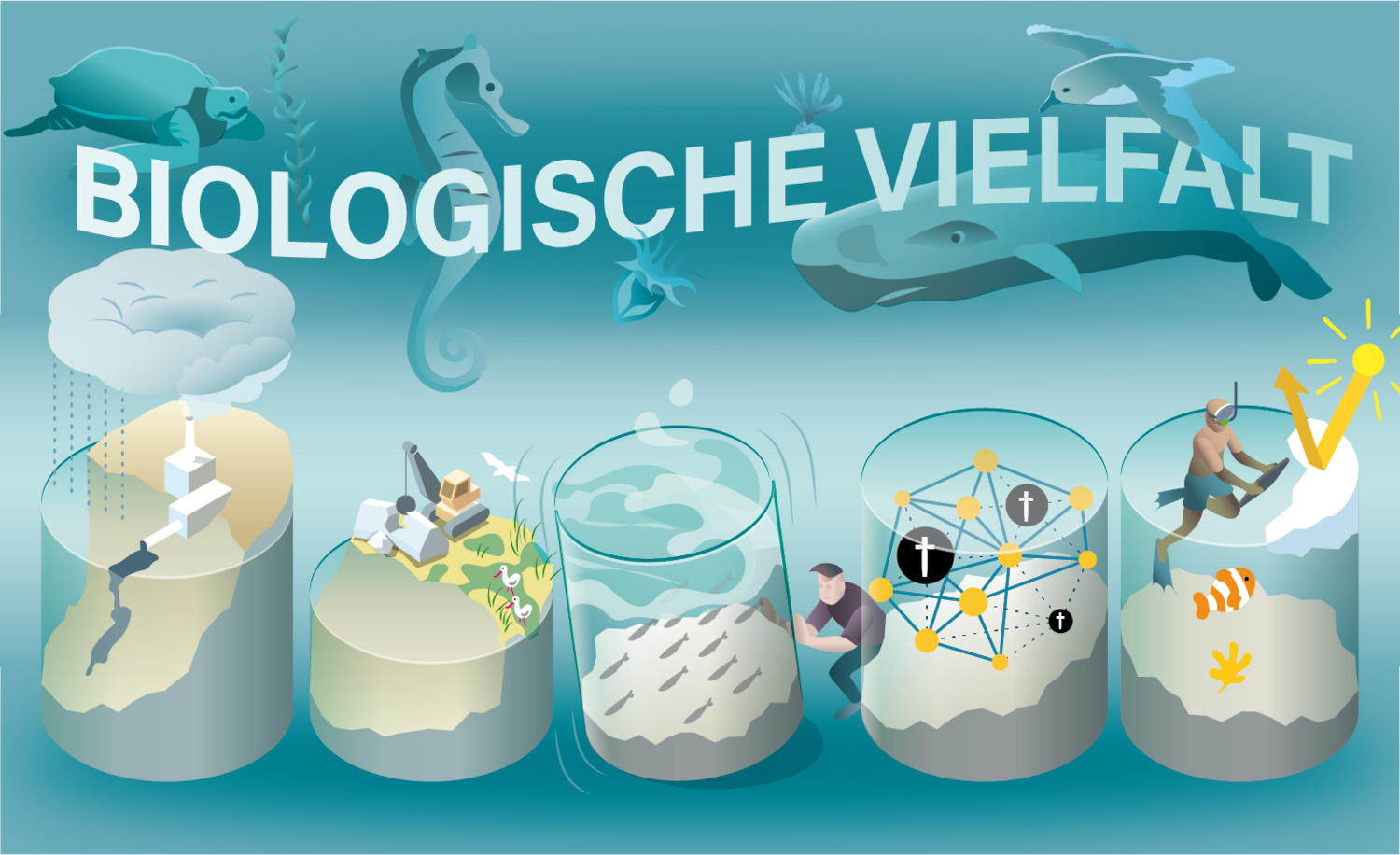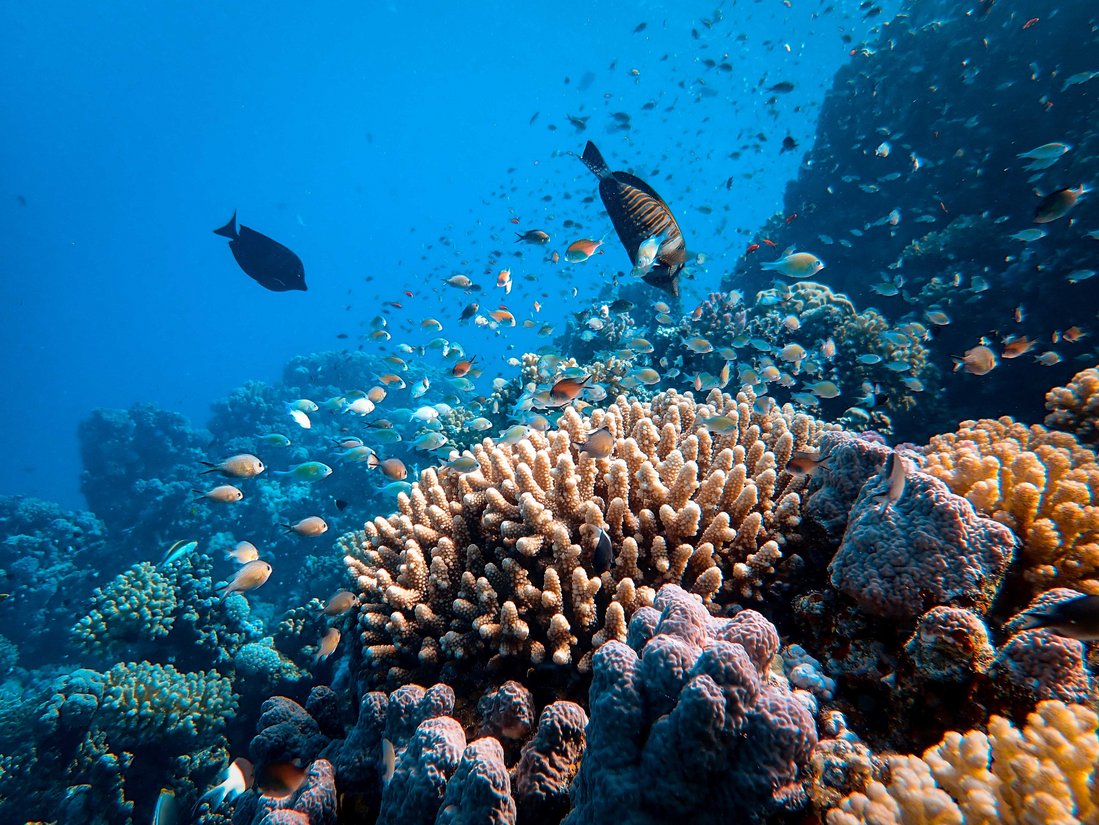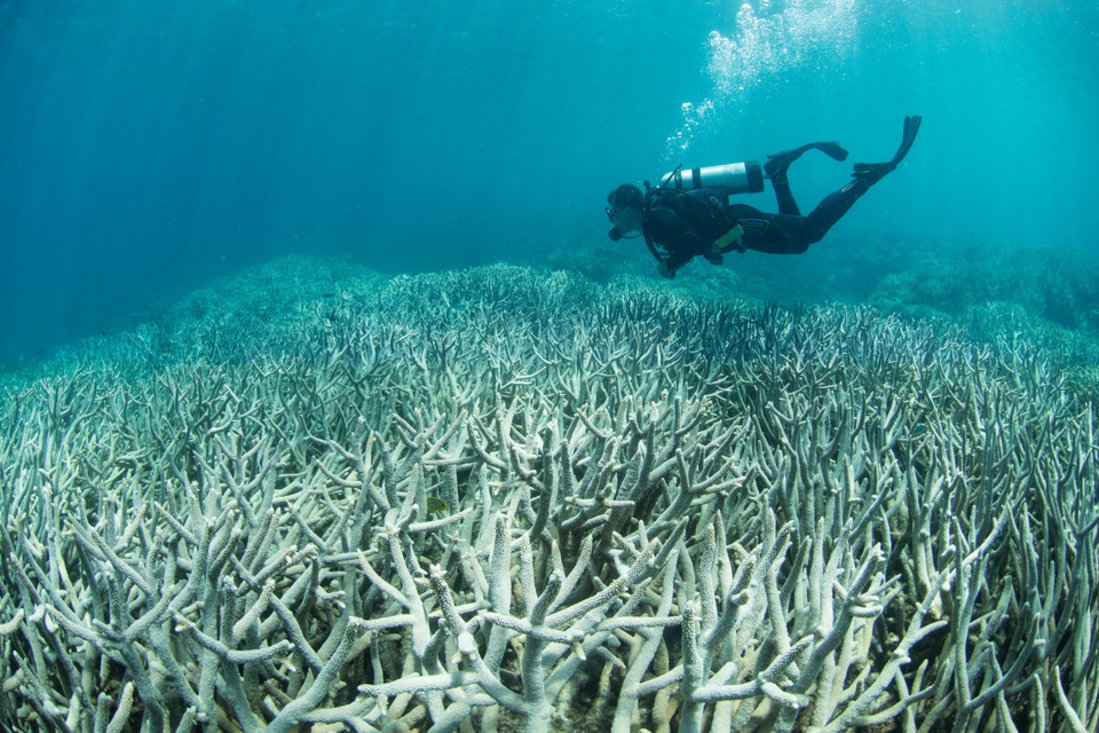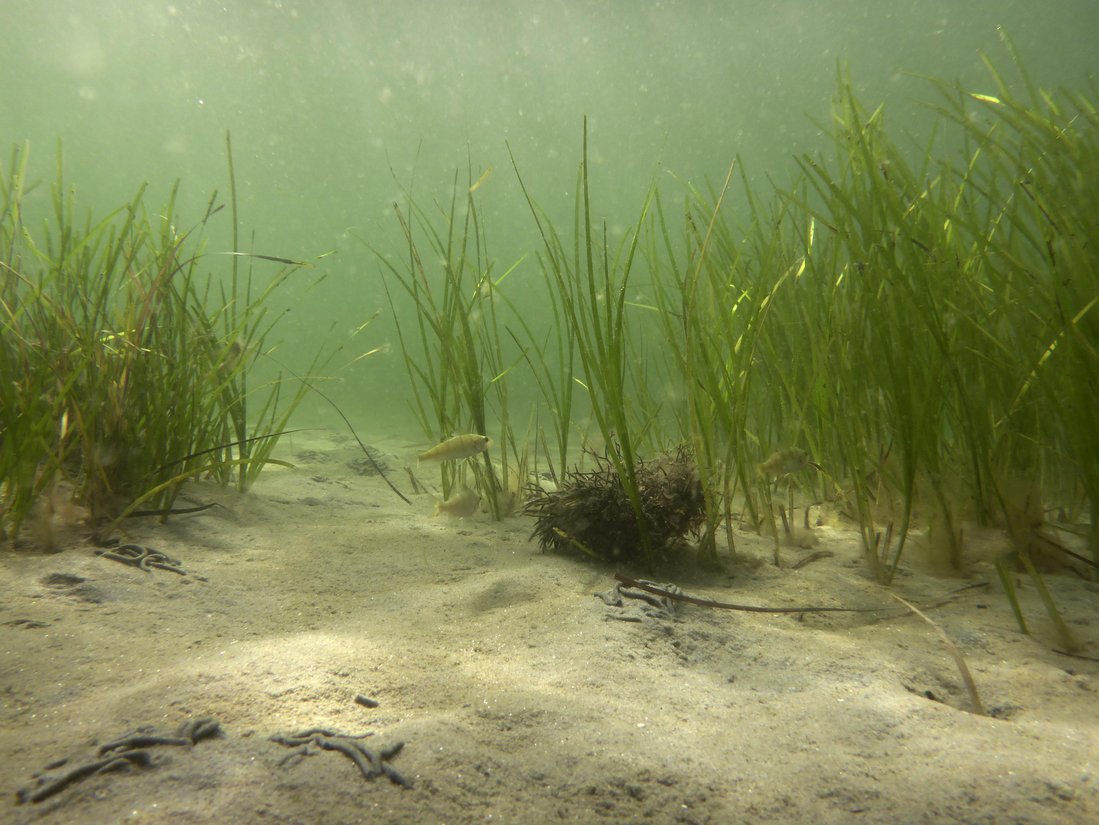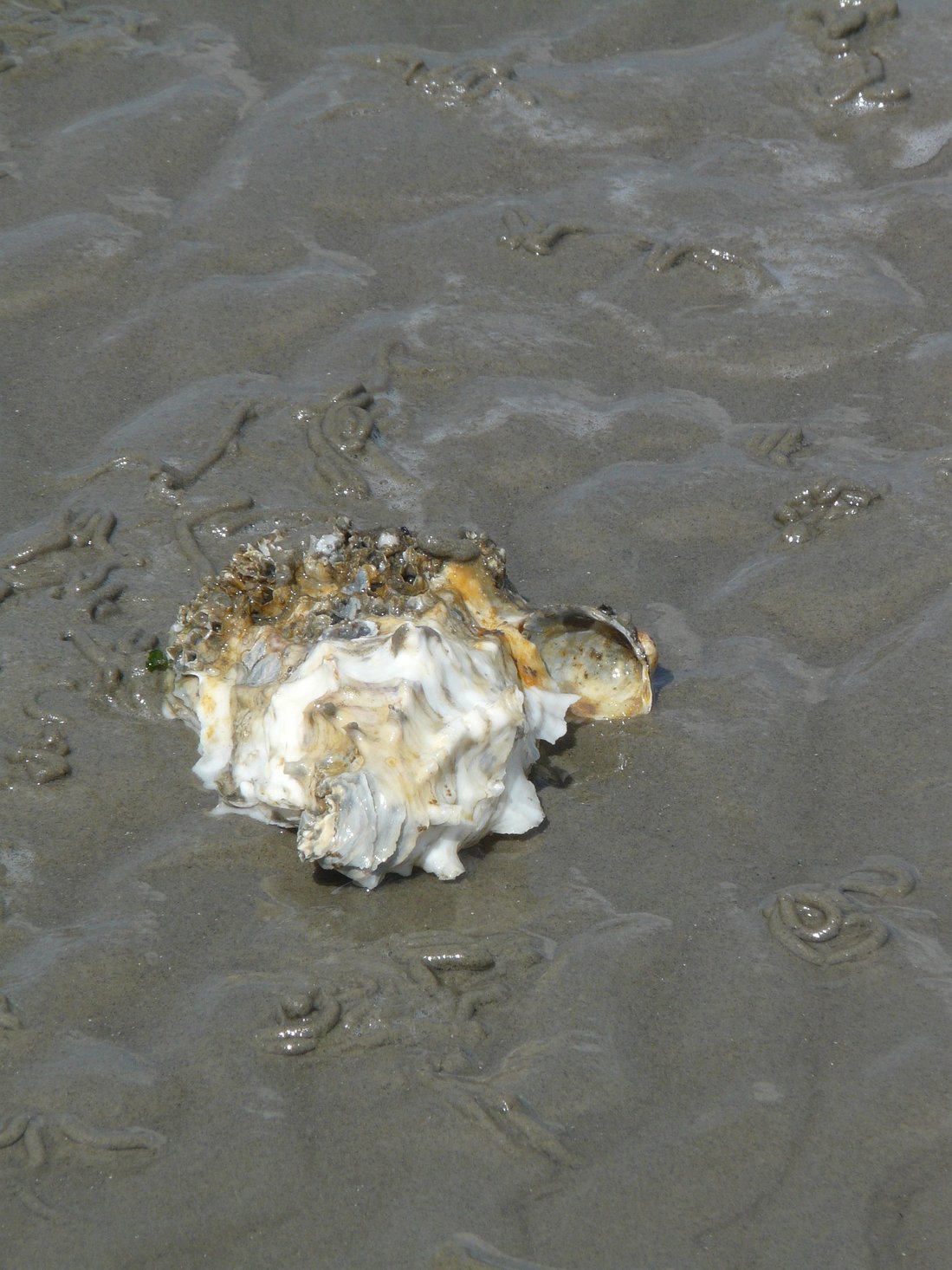The ocean is the largest continuous habitat on our planet. It is home to millions of different plants, animals, and microorganisms, thriving in a vast range of ecosystems. From tiny algae to the blue whale - the largest mammal on Earth - the diversity of life beneath the waves is astonishing. Yet, much of it is still unexplored or only partially understood by humans.
Biodiversity - a multifaceted concept
What does biodiversity mean?
The term biodiversity refers to the variety of all life on our planet. Within this, different concepts of diversity can be distinguished.
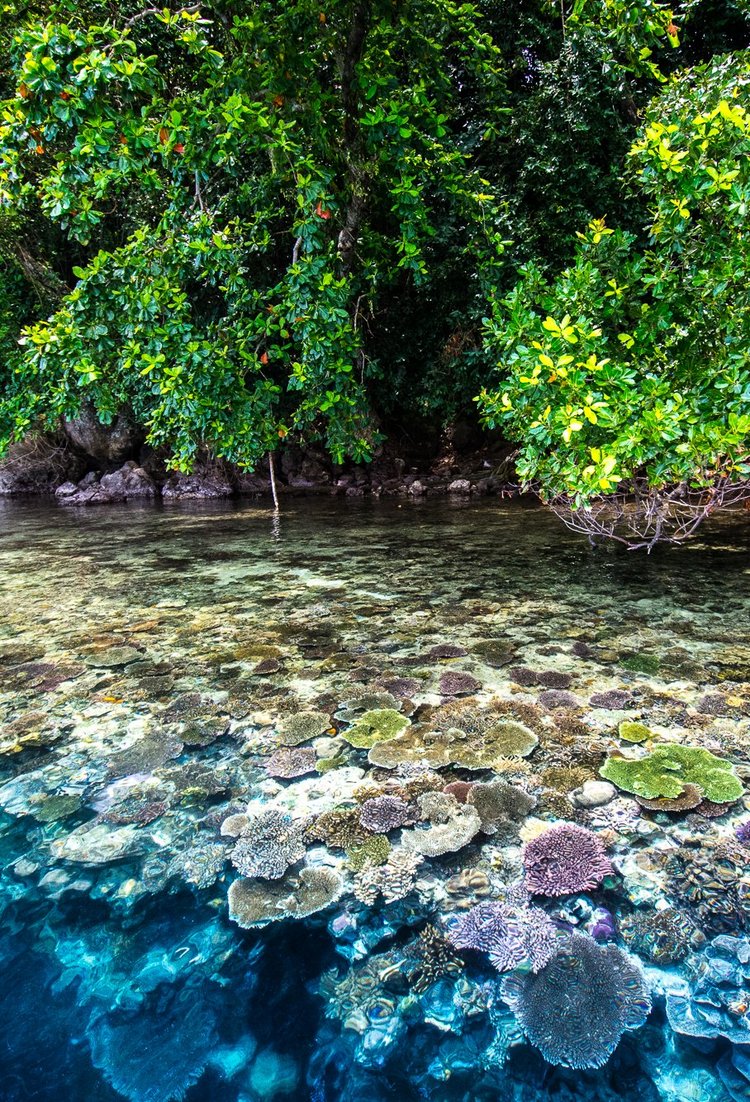
Diversity of species
Species diversity or taxonomic diversity refers not only to the diversity of different species, but also to the diversity within a species.
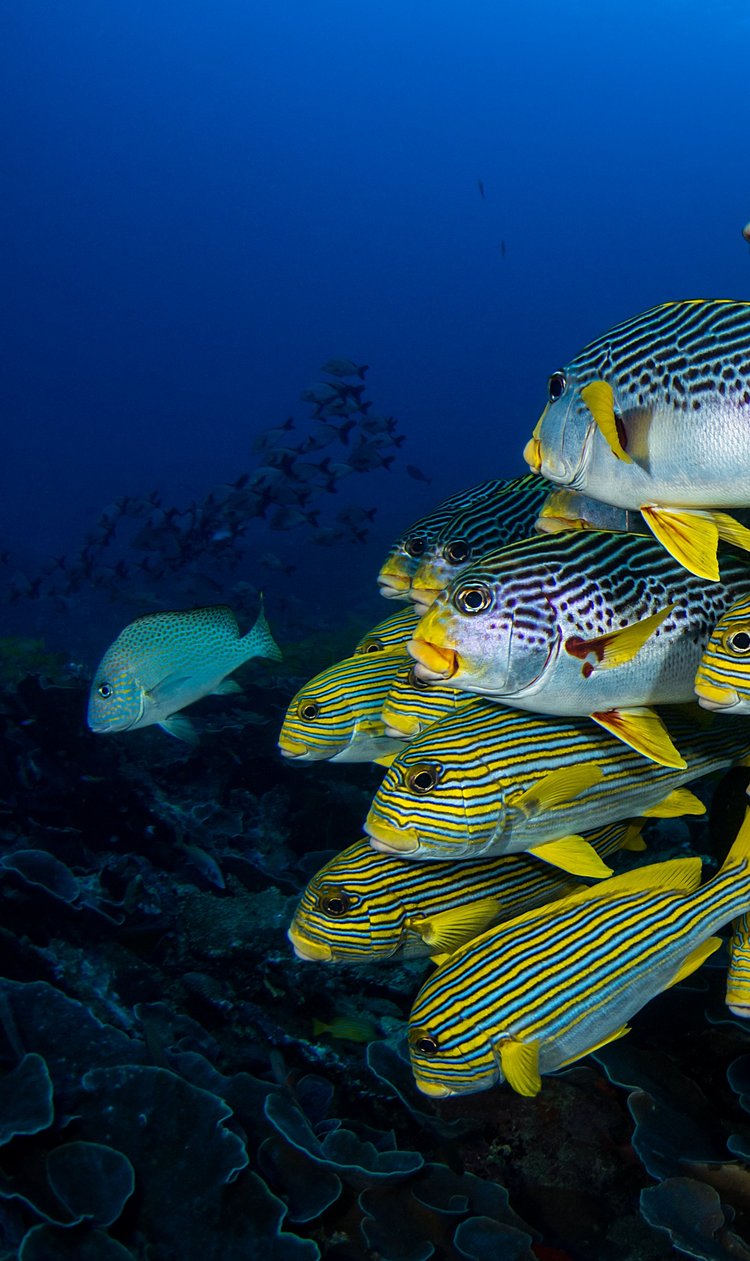
Genetic diversity - the basis of all differences?
The term genetic diversity is used to summarise the diversity of genetic information (also known as genotype) of individuals or populations of a species.
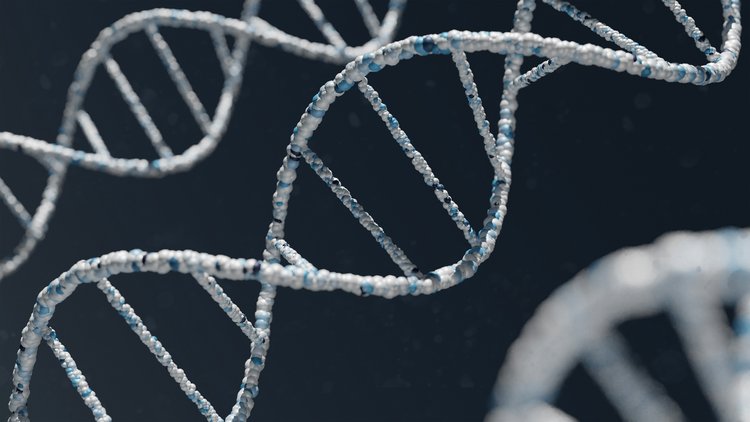
Genetic diversity - the basis of all differences?
The appearance and characteristics of a living organism (also known as phenotype) are characterised by the interaction of genetic traits and environmental factors.

Ecological diversity
The term ecological diversity encompasses the different habitats, communities, processes and interactions between organisms and their environment within a geographical area.
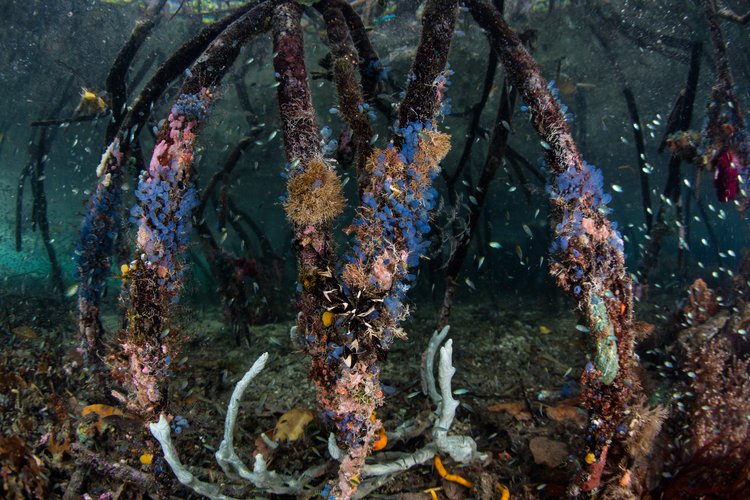
Ecological diversity
Ecologically diverse ecosystems are more stable, resilient and adaptable to natural or man-made changes than ecologically impoverished and barren ecosystems.
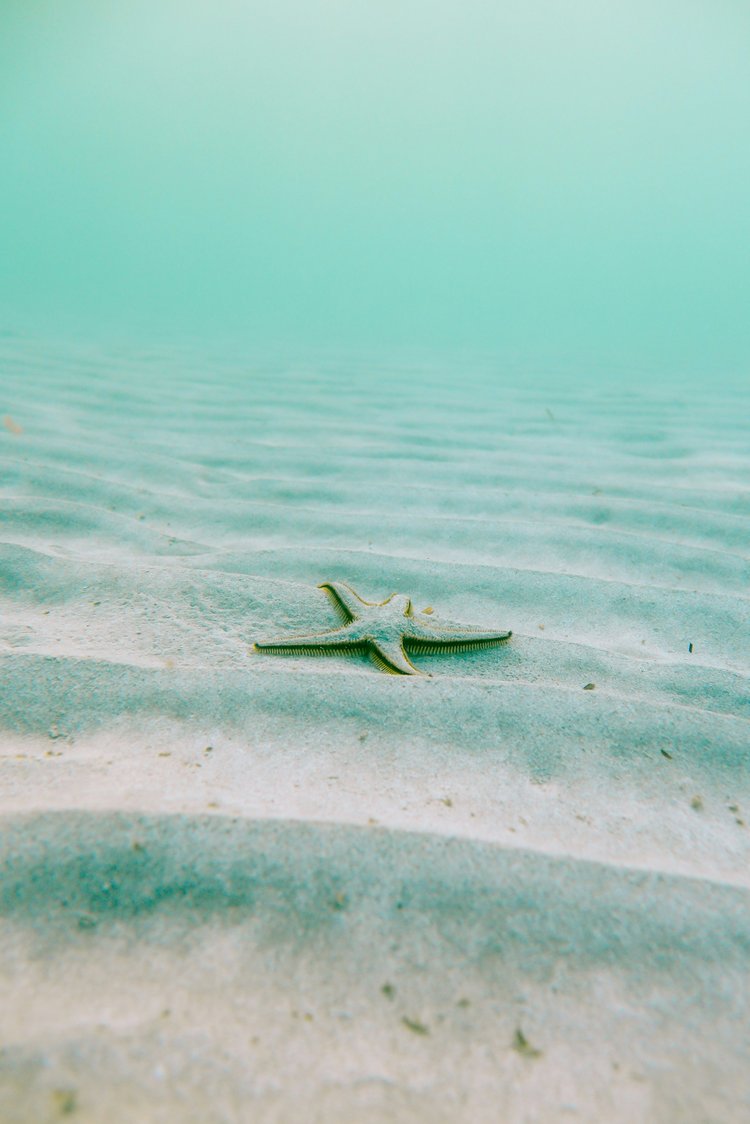
Cultural diversity
Culture can be understood as the diversity of behaviours and techniques of a population. Accordingly, cultural diversity is not only reserved for humans.
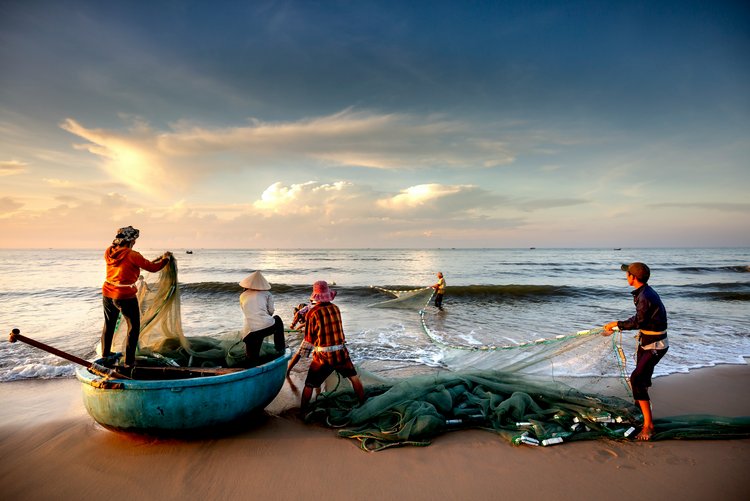
Cultural diversity
Marine creatures also pass on knowledge to future generations:
Hunting methods, migration routes, sounds and songs for communication - these are all characteristics of cultural diversity under water.

- What does biodiversity mean?
- Diversity of species
- Genetic diversity - the basis of all differences?
- Genetic diversity - the basis of all differences?
- Ecological diversity
- Ecological diversity
- Cultural diversity
- Cultural diversity
These marine ecosystems and habitats provide vital benefits to humanity. They generate oxygen for us to breathe and supply food for more than a third of the global population. They help purify wastewater, recycle nutrients, and make them available again. The ocean is also our strongest ally in the fight against climate change.
However, marine biodiversity is under threat. Human activities such as coastal development, pollution, overfishing, and climate change are placing immense pressure on these ecosystems. Their resilience is weakening, partly because these man-made stressors amplify each other. The consequences are already evident in many regions: species are abandoning their natural habitats as conditions become unlivable, while elsewhere, biodiversity is steadily declining. Many species are disappearing altogether, facing extinction.
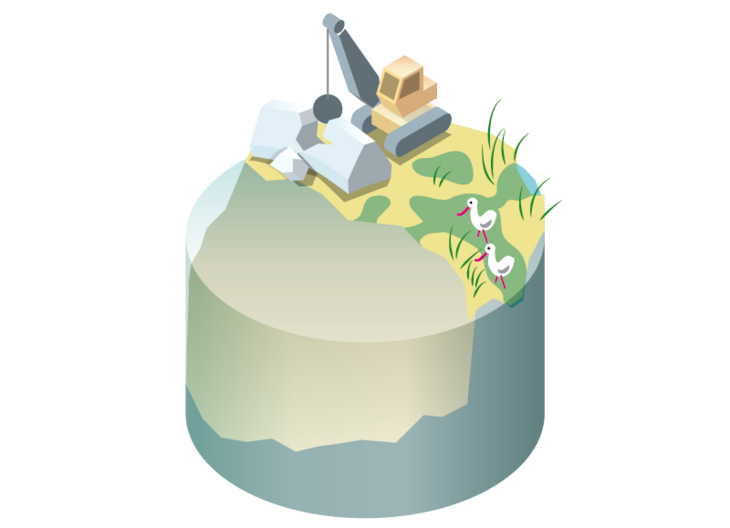
Despite these challenges, there is hope. Through targeted efforts to restore and sustainably utilise marine resources, we can protect and revive biodiversity. However, this requires a fundamental shift in how we interact with the oceans. If we humans want to have a future worth living on Earth, we need healthy and biodiverse oceans. Examples from many parts of the world show that marine communities can recover if we restore and protect their degraded habitats and use the ecosystems sustainably.
This means harvesting only as much fish and seafood as ecosystems can sustain without suffering damage. The overarching goal is to manage 30 to 50 percent of the world’s oceans in this responsible way. We already know which measures can make this possible - the challenge now is to put this knowledge into action. The future of our oceans is in our hands.



